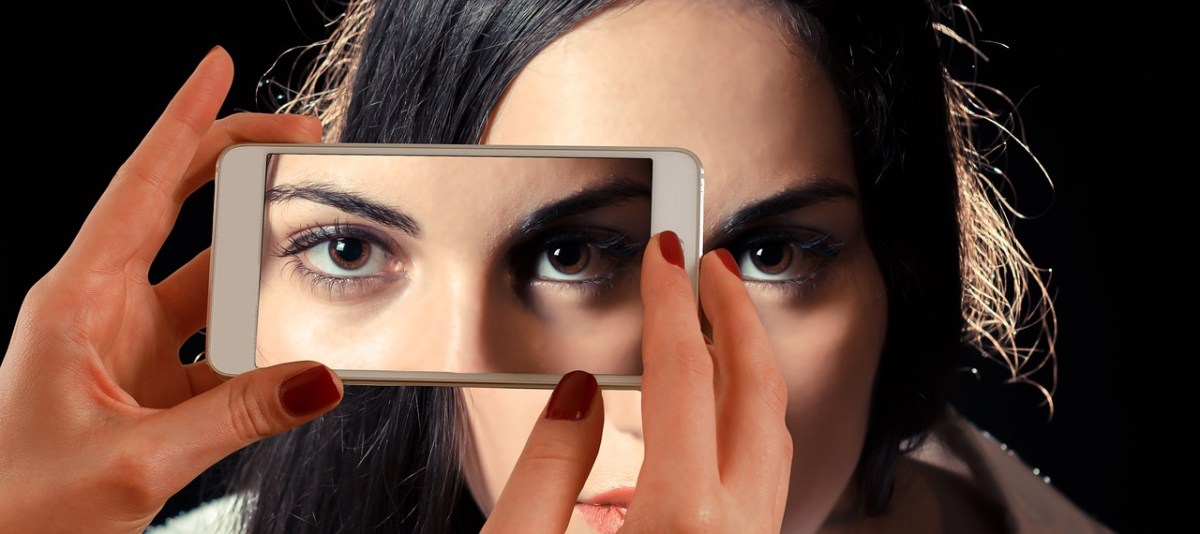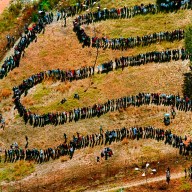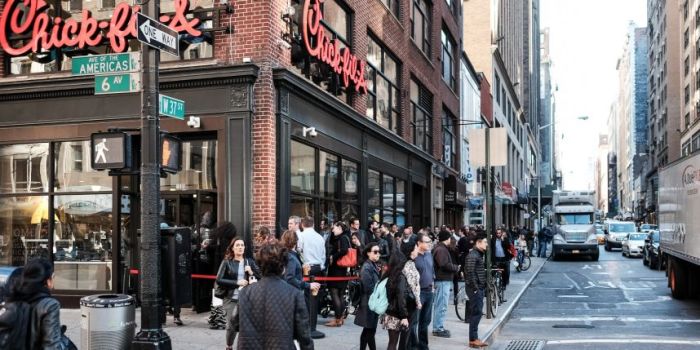A new facial recognition app makes finding strangers scarily easy.
FindFace, created by the Moscow-based NTechLab, works by comparing photographs to profile pictures on Vkontakte, a social network that works like Facebook across Russia and the former Soviet Union. The facial recognition technology — dubbed “Shazam for people”—uses an algorithm that allows quick searches in big data sets. The creators claim that not only will it revolutionize dating but it could also be used in law enforcement to accurately identify individuals. Aleksandr Kabakov, co-founder of NtechLab, explains why this app, which is 70 percent reliable, could improve people’s love lives and keep us safe. How did you come up with the idea to create Shazam for people?
It was made by our friends, who had an idea to use our face recognition algorithm to create a new type of dating service, where people would be able to find partners by their appearance. As a result, they created FindFace. RELATED:Fast growth, dating services come between Sofi and bank license: CEO What’s the main point of it?
FindFace gives you the chance to find people by their photo. You can find people you only saw once (and photographed), your acquaintances, when you only have a photo and don’t remember their full name or you can find the people who look just like you. Initially, it was designed for dating purposes, as the appearance is often the key factor that triggers engagement online or meeting in person. How does it work?
The algorithm is based on the neural network that is capable of learning and determining distinguishing features for personal identification: eye size, eyebrow thickness, lip shape, and so on. It was trained with millions of mapped photographs of people: in a semi-automatic mode, people in the photos are identified as John, or Jack, or Stephen. Then the network learns by itself, trying to extract the vectors of features that would help solve the task. It determines attributes, assigns them certain importance, and builds interconnections between them, and as a result, the network generates about 80 numbers to describe the information about a face. Having “calculated” the features, the neural network can apply them to other photos, as well. How could Shazam for people prevent terrorist attacks?
This algorithm can help police identify the terrorists quickly using the footage of CCTV and during the check-in stage at airport gates. Thanks to that the suspects will not be able to get into a country or disappear from the scene without a trace; the police will always be able to track them. Will this significantly reduce the chance of a terrorist attack?
For example, work on the contracts with various governments who wanted to use the technology to discover and identify criminals captured on city cameras. There are successful cases of police using FindFace to find the criminals from the footage. This is a highly efficient face recognition algorithm, which is able to reinforce the control centers, but it’s resulting efficiency still depends on the police forces themselves. When will it be available?
FindFace is already available on VK.com, the largest social network in Eastern Europe. And we will be working on integrations with other platforms and social networks. What’s next?
We’re going to launch the cloud face recognition software platform, which will be available for every business to plug into and use for their own recognition tasks. We will give everyone the opportunity to use it, but we will thoroughly monitor its usage and ban those organizations and people who try to use it inappropriately. To determine these cases we’re now developing algorithms that will help us detect inappropriate usage. FindFace has several beneficial uses, including security, retail solutions, and dating services. The software can check ID at e-gates and search for criminals in real-time using CCTV. It also displays targeted advertising to in-store customers, and identifies regular customers. FindFace lets users upload a photo of someone you like the look of, and the search engine will find that person or even those with similar facial features. —DmitryBelyaev
Face recognition app finds strangers

Pixabay


















